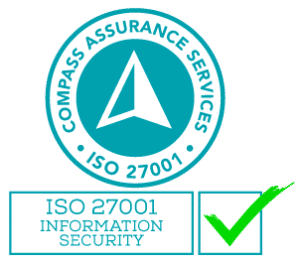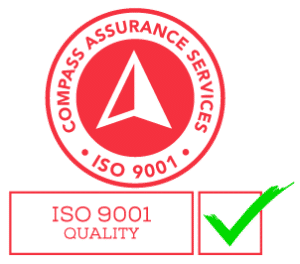Finance teams across small and mid-sized businesses are spending less time on spreadsheets and more time steering business decisions. Thanks to smarter accounting automation, the days of chasing paper invoices and manually entering data into clunky systems are being replaced by faster, more reliable processes.
Automating tasks like accounts payable, expense reporting, and financial report preparation is helping businesses save time, reduce errors, and improve the accuracy of financial data. As 2025 unfolds, business owners and CFOs aren’t asking if automation is worth it. They’re asking what comes next.
Learn more: Top Trends Shaping Accounting Technology in 2025
What Does Automation in Accounting Mean?
Many finance teams have already taken their first steps toward automation, especially in the accounts payable process. But there’s still a gap between partial automation and fully streamlined operations.
Manual Processes Still Slow Workflows
Despite adopting some digital tools, plenty of accounting teams still rely on time-consuming tasks such as:
- Entering invoice data manually into accounting systems
- Routing approvals via email or paper
- Matching purchase orders and invoices line by line
- Storing physical copies of financial records
These outdated steps don’t just slow down the AP process; they create opportunities for human error, duplicated payments, and delays in month-end financial reporting.
Automation is Gaining Ground
Modern accounts payable automation software is already delivering strong results for SMBs ready to move past patchwork systems:
- Smart data capture turns paper invoices into structured digital entries
- Automated approval workflows keep processes moving without bottlenecks
- Real-time tracking improves visibility across every stage of the accounts payable process
- Centralised dashboards support cleaner, faster financial statements
Learn more: Copilot in Accounting: How Can AI Be Used in Finance?
Accounting Automation Trends Developing in 2025
New developments in accounting automation are making it easier for finance teams to handle daily tasks and make long-term plans. These trends point to faster, smarter ways to automate accounts payable and improve decision-making across the board.
1. AI-Powered Accounts Payable Automation
Artificial intelligence is becoming more than a buzzword. In AP automation solutions, AI is already helping businesses move past basic rule-based systems.
What’s changing:
- Invoice data is captured, validated, and categorised automatically
- Duplicate payments and outliers are flagged before they cause issues
- Approval chains are optimised based on value, supplier, or priority
This makes the accounts payable process faster and more accurate, especially for businesses still dealing with high volumes of paper invoices.
2. Stronger Integration Across Finance Platforms
Disconnected systems often mean manual handovers, inconsistent data, and lost time. The latest accounting automation software is designed to link directly with:
- ERP systems
- Payroll and HR platforms
- Banking and reconciliation tools
These integrations simplify financial processes, eliminate double-handling, and give accounting teams a single source of truth.
3. Custom Workflow Automation Without Developer Input
No-code and low-code tools are putting power into the hands of accounting teams. Without relying on IT support, finance managers can now build and adjust approval workflows, set invoice routing rules, or automate recurring entries.
Key benefits:
- Faster implementation and fewer delays
- Clearer ownership of the AP process
- Systems that adapt to how the business operates
4. Financial Reporting and Live Dashboards
Waiting until month-end for a financial report is quickly becoming outdated. Modern systems are pushing live data into accessible dashboards that show:
- Cash flow in real time
- Outstanding invoices and approvals
- Trends in supplier spend or payment cycles
These sorts of insights can help finance teams avoid issues and reduce reliance on guesswork or delayed figures.
Accounting Automation Benefits: Modern AP Solutions
The right accounts payable automation software can truly transform how finance teams work, streamlines entire workflows, and provides the foundation for more strategic financial management.
Time Saved Across All Processes
Manual data entry, invoice matching, chasing approvals, and uploading documents all drain hours from your team each week. Automating accounts payable reduces these low-value tasks, allowing staff to focus on higher-priority work.
- Invoices are captured and coded automatically
- Reminders and escalations are triggered without human input
- Reports can be generated instantly rather than manually compiled
Fewer Errors, Greater Accuracy
Human error is one of the biggest risks in the accounts payable process. Mistyped invoice numbers, duplicate payments, or incorrect coding can lead to discrepancies in financial statements and compliance issues.
Automation reduces these risks through:
- Pre-built validation rules
- Intelligent duplicate detection
- Consistent approval routing
Better Visibility and Control
Manual systems often lead to blind spots. Missing invoices, unclear responsibilities, and a lack of real-time data create delays and miscommunication.
AP automation solutions offer:
- A single dashboard to monitor invoices at every stage
- Custom alerts for overdue actions
- Audit trails for compliance and dispute resolution
Learn more: How AI Tools for Accounting Simplify Tax Compliance
How to Choose and Implement the Right Automation Solutions
Implementing the right accounting automation will build processes that support growth, reduce risk, and make day-to-day work simpler for your team. However, it’s important to have a structured plan in place to ensure the solutions you choose are right for your business, rather than just selecting the latest trends.
1. Evaluate Current Workflows
Start by reviewing your existing accounts payable process:
- Where are delays occurring?
- Which tasks are repeated frequently?
- How much time is spent on manual data entry or chasing approvals?
This baseline assessment helps identify the biggest opportunities for automation.
2. Involve Stakeholders Early
Change works best when everyone’s on board. That includes:
- Accounting teams who use the tools daily
- IT or operations who support integration
- Business leaders who care about cost and visibility
Bring these voices together early to ensure your chosen solution fits everyone’s needs and avoids resistance later.
3. Define Clear Goals
Set specific objectives for your automation project. For example:
- Cut invoice processing time by 50%
- Eliminate paper invoices within six months
- Improve reporting accuracy by reducing manual inputs
Having definite targets in place will keep the project focused and make it easier to measure success.
4. Choose the Right Solution
Not all accounting automation software is created equal. Look for platforms that:
- Offer integration with your existing finance systems
- Support flexible approval workflows
- Provide local support and guidance for rollout
- Scale as your business grows
The right AP automation solution should solve the challenges your team deals with, and enable them to work smoothly.
Learn more: Benefits of Managed IT Services for SMB Accountants in 2025
Next Steps: Get the Right Accounting Automation Tools, the First Time
Taking a proactive approach to upgrading your financial processes will give your team the tools they need to work quickly and simply. This, in turn, enables you to make faster decisions and scale sustainably.
Small and mid-sized businesses don’t need massive budgets to access these improvements. They just need the right tools—and the right partner.
At Steadfast Solutions, we specialise in helping finance teams modernise with trusted, tailored accounting automation software and expert support. Reach out to us for an obligation-free consultation, and we can answer your questions directly.




